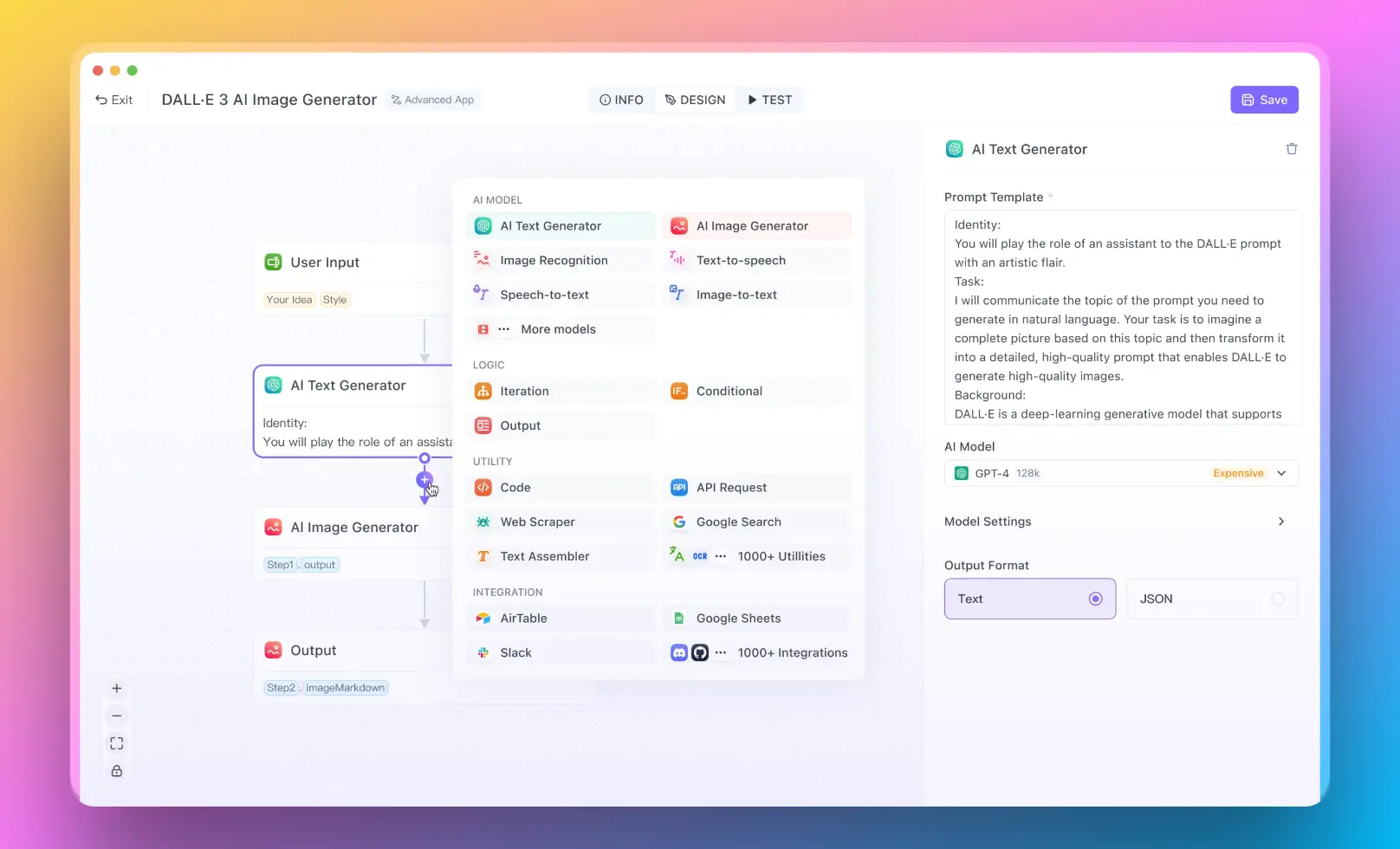In today's data-driven world, working with diverse data formats is a common task for developers, analysts, and database administrators. One of the most widely used data formats is CSV (Comma-Separated Values), which is a simple and versatile way to store tabular data. However, to effectively analyze and manipulate this data, it often needs to be imported into a database management system like MySQL. In this article, we'll explore various methods to import CSV files into MySQL, along with step-by-step instructions, sample codes, and best practices.
Anakin AI is the Best AI Automation Platform for your AI Automation!
Connect Your Google Sheets to Anakin AI, and build a Customized Workflow with a No Code AI App Builder!
👇👇

Method 1: Using MySQL Command Line
The MySQL command line interface provides a straightforward way to import CSV data directly into a MySQL database. This method is particularly useful when you need to automate the import process or integrate it into scripts or applications.
Ensure CSV File Accessibility: Make sure your CSV file is accessible from the MySQL server. This could mean placing the file on the server itself or ensuring that the server has read permissions for the file's location.
Connect to MySQL Server: Connect to your MySQL server using a MySQL client or terminal. You can use the mysql command or a graphical client like MySQL Workbench.
Create Target Table: Create a table with the appropriate columns and data types to match your CSV file structure. You can use the CREATE TABLE statement to define the table schema.
Import CSV Data: Use the LOAD DATA INFILE statement to import the CSV data into the target table:
LOAD DATA INFILE '/path/to/your/csv/file.csv'
INTO TABLE your_table_name
FIELDS TERMINATED BY ','
ENCLOSED BY '"'
LINES TERMINATED BY '\n'
IGNORE 1 ROWS;
Replace /path/to/your/csv/file.csv with the actual path to your CSV file, your_table_name with the name of your target table, and adjust the field and line terminators as needed. The IGNORE 1 ROWS option is used if your CSV file has a header row that you want to skip.
Method 2: Using MySQL Workbench
MySQL Workbench is a popular graphical tool for working with MySQL databases. It provides a user-friendly interface for importing CSV files into MySQL.
Open MySQL Workbench: Launch MySQL Workbench and connect to your MySQL server.
Navigate to Target Database: In the Navigator panel, locate the target database or table where you want to import the CSV data.
Start Import Wizard: Right-click on the target database or table, and select "Table Data Import Wizard."
Select CSV File: Click the "Browse" button to navigate to and select your CSV file.
Configure Import Settings: Configure import settings like file encoding, field separators, and whether the file has a header row.
Choose Import Destination: Choose to import data into an existing table or create a new table during the import process.
Start Import: Click "Next" and then "Start Import" to begin the import process. MySQL Workbench will import the CSV data into the specified table.
Method 3: Using phpMyAdmin
phpMyAdmin is a popular web-based tool for administering MySQL databases. It provides a convenient interface for importing CSV files into MySQL.
Open phpMyAdmin: Open phpMyAdmin and select your MySQL server and database.
Navigate to Target Table: Click on the target table or create a new table if needed.
Open Import Tab: Click the "Import" tab or button.
Select CSV File: Click the "Choose File" button and select your CSV file.
Configure Import Options: Configure import options like character set, field terminators, and whether the file has a header row.
Start Import: Click "Go" to start importing the CSV data into the table.
Method 4: Using a Programming Language (e.g., Python, PHP)
If you prefer a programmatic approach or need to integrate CSV imports into your applications, you can use programming languages like Python or PHP to import CSV data into MySQL.
Here's an example using Python and the mysql.connector library:
import mysql.connector
import csv
# Connect to MySQL
cnx = mysql.connector.connect(user='your_user', password='your_password', host='your_host', database='your_database')
cursor = cnx.cursor()
# Create a table if it doesn't exist
create_table_query = """
CREATE TABLE IF NOT EXISTS your_table_name (
column1 VARCHAR(255),
column2 INT,
...
)
"""
cursor.execute(create_table_query)
# Open the CSV file
with open('path/to/your/csv/file.csv', 'r') as csv_file:
# Skip the header row if needed
next(csv_file)
# Prepare the SQL query
insert_query = """
INSERT INTO your_table_name (column1, column2, ...)
VALUES (%s, %s, ...)
"""
# Read and insert data from the CSV file
for row in csv.reader(csv_file, delimiter=','):
values = [value.strip() for value in row]
cursor.execute(insert_query, values)
# Commit the changes and close the connection
cnx.commit()
cursor.close()
cnx.close()
Replace the placeholders with your actual MySQL credentials, table name, column names, and CSV file path. Adjust the code as needed based on your specific requirements.
Best Practices and Considerations

When importing CSV data into MySQL, it's essential to follow best practices to ensure data integrity and efficient processing:
Validate CSV Data: Before importing, validate the CSV data to ensure it adheres to the expected format and structure. This can help prevent errors and data corruption.
Handle Encoding and Special Characters: Pay attention to character encoding and special characters in your CSV data. Ensure that the encoding is correctly specified during the import process to avoid data loss or corruption.
Optimize Import Performance: For large CSV files, consider optimizing the import process by disabling indexes, foreign key checks, and other constraints temporarily during the import. Re-enable them after the import is complete.
Backup Data: Always create a backup of your database before performing any significant data import or modification. This will allow you to recover your data in case of any issues or errors during the import process.
Monitor Import Progress: For large CSV files, monitor the import progress and allocate sufficient resources (memory, CPU, disk space) to ensure a smooth and efficient import process.
Automate and Schedule Imports: If you need to import CSV data regularly, consider automating the process using scripts or scheduling tools to streamline the workflow and reduce manual effort.
By following these methods and best practices, you can seamlessly import CSV data into MySQL, enabling efficient data analysis, reporting, and decision-making within your applications and workflows.
FAQ: Importing CSV Files into MySQL
How to import a CSV file in MySQL?
To import a CSV file in MySQL, follow these steps:
- Make sure your CSV file is accessible from the MySQL server.
- Connect to your MySQL server using a MySQL client or terminal.
- Create a table with the appropriate columns and data types to match your CSV file structure.
- Use the
LOAD DATA INFILEstatement to import the CSV data into the table:
LOAD DATA INFILE '/path/to/your/csv/file.csv'
INTO TABLE your_table_name
FIELDS TERMINATED BY ','
ENCLOSED BY '"'
LINES TERMINATED BY '\n'
IGNORE 1 ROWS;
Replace /path/to/your/csv/file.csv with the actual path to your CSV file, your_table_name with the name of your target table, and adjust the field and line terminators as needed.
How to import CSV to MySQL using command line?
To import a CSV file into MySQL using the command line, follow these steps:
- Open a terminal or command prompt.
- Connect to your MySQL server using the
mysqlcommand or a MySQL client. - Create a table with the appropriate columns and data types to match your CSV file structure.
- Use the
LOAD DATA INFILEstatement to import the CSV data into the table:
LOAD DATA INFILE '/path/to/your/csv/file.csv'
INTO TABLE your_table_name
FIELDS TERMINATED BY ','
ENCLOSED BY '"'
LINES TERMINATED BY '\n'
IGNORE 1 ROWS;
Replace /path/to/your/csv/file.csv with the actual path to your CSV file, your_table_name with the name of your target table, and adjust the field and line terminators as needed.
How to import a file in MySQL?
To import a file (e.g., CSV, SQL dump, or any other supported format) in MySQL, follow these general steps:
- Connect to your MySQL server using a MySQL client or terminal.
- Create a table with the appropriate columns and data types to match the file structure (if necessary).
- Use the appropriate MySQL statement or tool to import the file:
- For CSV files, use the
LOAD DATA INFILEstatement. - For SQL dump files, use the
SOURCEor\.command. - For other file formats, you may need to use specific tools or utilities provided by MySQL.
How to import CSV into MySQL Python?
To import a CSV file into MySQL using Python, you can use a Python database connector library like mysql.connector. Here's an example:
import mysql.connector
import csv
# Connect to MySQL
cnx = mysql.connector.connect(user='your_user', password='your_password', host='your_host', database='your_database')
cursor = cnx.cursor()
# Create a table if it doesn't exist
create_table_query = """
CREATE TABLE IF NOT EXISTS your_table_name (
column1 VARCHAR(255),
column2 INT,
...
)
"""
cursor.execute(create_table_query)
# Open the CSV file
with open('path/to/your/csv/file.csv', 'r') as csv_file:
# Skip the header row if needed
next(csv_file)
# Prepare the SQL query
insert_query = """
INSERT INTO your_table_name (column1, column2, ...)
VALUES (%s, %s, ...)
"""
# Read and insert data from the CSV file
for row in csv.reader(csv_file, delimiter=','):
values = [value.strip() for value in row]
cursor.execute(insert_query, values)
# Commit the changes and close the connection
cnx.commit()
cursor.close()
cnx.close()
Replace the placeholders with your actual MySQL credentials, table name, column names, and CSV file path. Adjust the code as needed based on your specific requirements.
